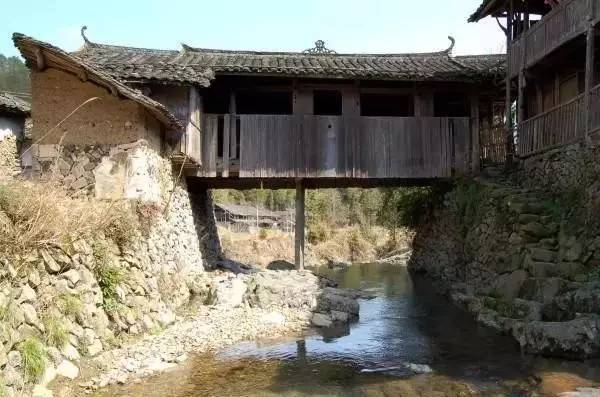Arcade bridges transcend time
Wooden arcade bridges, often found in East China's Fujian and Zhejiang provinces, are used not only for transportation but also as places to socialize and worship on special occasions.
The "traditional design and practices for building Chinese wooden arch bridges", written by UNESCO on the List of Intangible Cultural Heritage in Need of Urgent Safeguarding in 2009, refers to traditional architectural tools, traditional craftsmanship, "beam-weaving" technology, and mortise and tenon joints. The techniques have been passed on orally or through personal experience from generation to generation.
In the tiny village of Xinjiu in Yayang town, Taishun county, Zhejiang province, a 100-year-old woman walks on two wooden arcade bridges above the rivulet every day.
One bridge, built in 1821, was where she spent her lifetime as a snack vendor, while the other, located only 100 meters away, was constructed this year under the guidance of her 40-year-old grandson, Wu Xueyang, one of a handful of local artisans who have inherited the skills for building traditional arcade bridges.
Pubin Bridge
Called Pubin Bridge, the 200-year-old structure measures 13.6 meters in length and 4.25 meters in width. The construction was funded by donations from residents living in adjacent regions during the Qing Dynasty (1636-1912).
Located at the intersection of Fujian and Zhejiang provinces, Pubin Bridge functioned as a transport hub in the ancient times. Back then, passers-by often took a break on the bridge and watched puppet shows that were occasionally staged there.
For decades, Wu Xueyang's grandmother eked out a living and supported her large family by running a snack stall on the bridge, serving green tea and rice cakes for hungry passers-by.
In 2016, Pubin Bridge was included in the list of national key cultural relics. A total of 15 arcade bridges in Taishun have so far been conferred this honor.

Pubin Bridge is located in Xinjiu village, Yayang town, Taishun county, Zhejiang province. [Photo/zj.zjol.com.cn]
Yonghe Bridge
In recent years, Taishun authorities have encouraged local residents to build more arcade bridges that resemble the ancient ones so that they can acquire traditional skills during the process. More than 20 such bridges have been built around the county so far.
Yonghe Bridge, a new bridge in the Xinjiu village, measures 40 meters in length and 5 meters in width. The construction of this structure was funded by donations from local villagers who were eager to leave behind their legacy for future generations.
Yonghe Bridge, like the other traditional wooden arcade bridges, integrates traditional Chinese techniques of stonemasons, bricklayers, sculptors, painters, and calligraphers.
The bridge was made using wood derived from around 1,000 trees and does not feature the use of nails.
The chief designer of the bridge, Wu Xueyang, grew up in the village where his grandmother often told him tales about Pubin Bridge.
At the age of 12, Wu dropped out of school and worked in different professions before following in his father's footsteps by becoming an apprentice for ancient architecture carpentry when he was 17.
Since then, Wu has been honing his skills by engaging in renovation and repair projects on ancient architectures.
Today, a beam on Yonghe Bridge has been engraved with Wu's name, becoming a source of pride for his grandmother.





 play
play